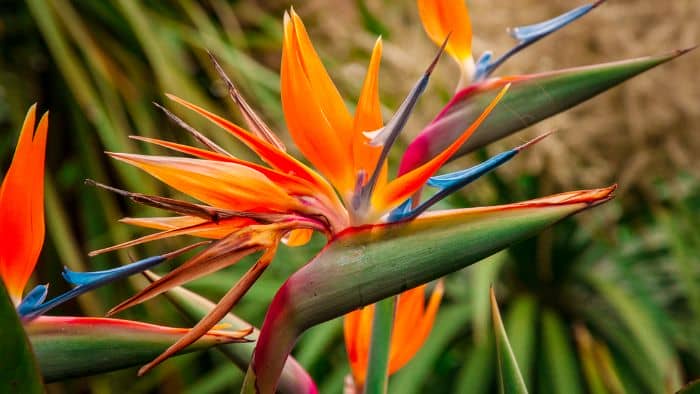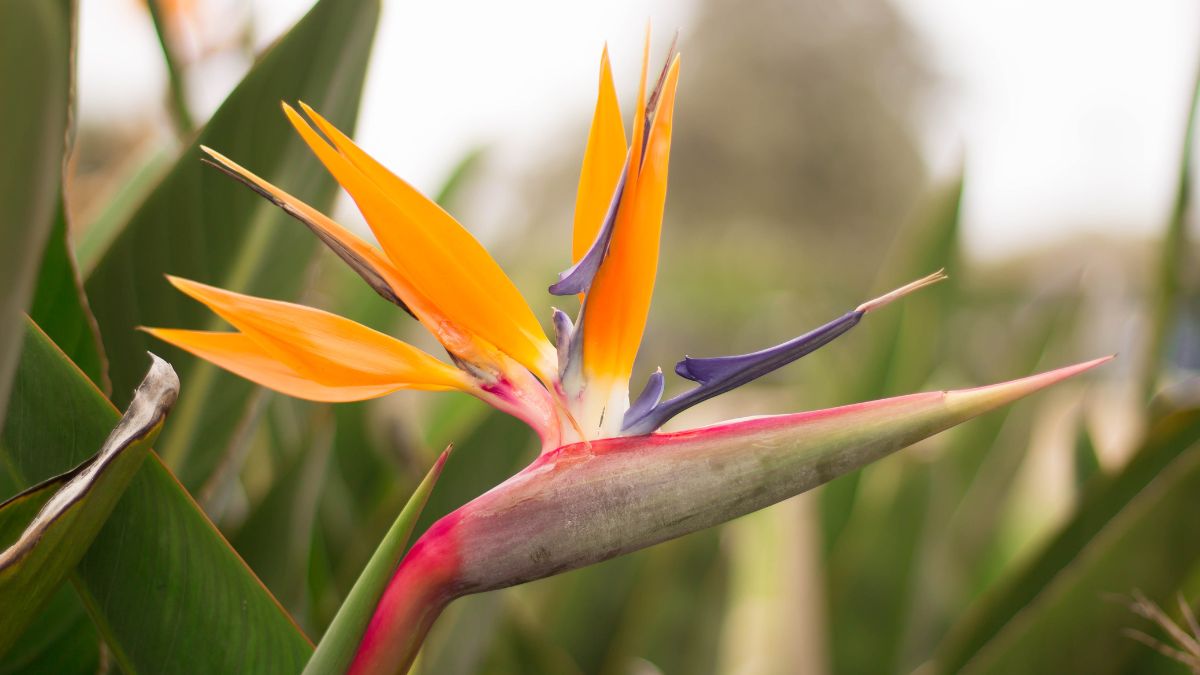What is the best soil mix for bird of paradise plants? I first grew these plants when I was an 11 year old boy and collected a bag of seeds. They are one of the most beautiful flowering plants in the world, and growing Strelitizia, or Bird of Paradise plants is a rewarding activity. Follow to find out more about my tips based on personal experience to prepare the best soil mix for bird of paradise plants.
What Is A Bird Of Paradise Plant?
This is a name that we give to the 5 (or maybe 4) species in the Strelitzia genus. The most commonly grown Strelitzia plants are Strelitzia reginae, which has orange flowers, and Strelitzia nicolai, the giant bird of paradise plant, which has white flowers. These make attractive house plants, although Strelitzia nicolai can get really really big, making it a useful specimen in a shopping mall or hotel lobby, where it can easily grow to three stories tall!
Strelitzia reginae, the most common of the bird of paradise plants produces clumps of plants over time that reach 4-6 feet tall depending on conditions and produce beautiful orange flowers.
How I Discovered The Best Soil Mix For Bird Of Paradise Plants
The first time I grew these was as an eleven-year-old boy. I heard that there was some money to be made by selling the seeds so I walked around town and collected two pounds of seeds. It turned out I got the species name wrong and nobody wanted my seeds so I put them in a planter, planting them in a layer about two inches deep!! No idea what I was doing. Then I put the soil on top. They did not germinate.

I lost interest in plants at that stage and became interested in fireworks. I made some of my own gunpowder and lit it on top of the now abandoned planter. Something about the heat and smoke, and rain the next day, caused every seed to germinate. My long-suffering Mom repotted these seedlings into hundreds of pots and sold them, and planted a few in their garden. But in this, I learned a lesson – Birds of Paradise plants love charcoal in their soil!
What Is The Best Soil Mix For Bird Of Paradise Plants
In the wild, Strelitizia reginae (the one with orange flowers that do not get so big) is found growing in soil that tends to be a loam with a clay base, and in some cases in sandy soil. Strelitzia nicolai on the other hand is commonly found in sandy soils, but can also grow well in clay soil as long as it does not get too wet.
When we mix soil for these plants it is important to consider that they have underground storage roots. These will rot if they get too wet. Hence when I grow bird of paradise plants in pots I normally tend to try and make light fluffy soil that is 4 parts compost, 1 part pearlite, 1 part pine bark, 3 parts potting soil, and one part crushed lump charcoal (not biochar or activated carbon, just barbecue charcoal crushed up). You will not see anybody else referring to that (yet).
This soil mix is light, fluffy, and well-drained and bird of paradise plants thrive in it!! Something about the charcoal mimics their natural habitat where much of the soil can be comprised of charcoal that has built up over hundreds of thousands of years in the soil.
Repotting Bird Of Paradise Plants
These plants grow slowly, but somehow, when they get going they suddenly fill a pot up completely, and the roots swell with watering and break the pot! This necessitates a repotting event.
I normally break the plants up into smaller clumps and re-pot these. It is quite easy to break the clumps apart. Plant them in new pots, placing the stems and roots quite deep in the soil. The plants like this and I guess it mimics a flood or similar event in their natural environment. I normally trim about 30% of the leaves from the plant, leaving just young leaves. This reduces transplant shock.
After repotting the bird of paradise plants be careful not to overwater them as root damage has occurred and this can cause root rot. Water the pot lightly, and allow it to dry out between watering cycles. Once you see the plant starting to grow again you can water it as per the normal watering cycle (I water once a week).
What Is The Best Pot For Bird Of Paradise Plants?
I tend to like to pot them in old wine barrels cut in half!! Something like this will work well. Make sure to lift the pot up from the ground so that it can drain well. I normally put a two-inch layer of gravel in the bottom of the pot and then put the best potting soil mix for bird of paradise plants detailed above over this gravel. This improves drainage.
Any pot you choose should be one that is easy to remove the plants from for repotting. Bird of paradise plants require occasional repotting events, so planning for this helps. A pot that is not easy to remove a solid block of roots from will necessitate you breaking the pot to remove the plants (I speak from experience).
What Is The Best Fertilizer For Bird Of Paradise Plants?
If the plants are in pots they require a slow-release balanced fertilizer such as this that is formulated for flowering plants will work. I always give the pots half a cup of bone meal scratched into the soil surface together with compost once a year.
How To Fertilize Bird Of Paradise Plants
The best soil mix for bird of paradise plants that I detailed is relatively balanced in terms of its ability to provide nutrients. However, with time the compost will break down, hence I believe in making a mix of compost, fertilizer as shown above, and bone meal and placing a layer of this about an inch to two inches deep over the surface of the pot each year. This mimics the natural layer of leaves and compost that form around these plants in the wild. The added layer keeps the pot filled, and provides supplemental nutrients to the plants for the next year. They are not very heavy feeders hence feeding once a year is more than adequate.
In Conclusion On The Best Soil Mix For Bird Of Paradise Plants
The best soil mix for bird of paradise plants is a mix of compost, pearlite, potting soil, and charcoal. This mimics the natural soils these plants grow in. Make sure your soil is well drained, to avoid root rot, and provide plants with big pots in which to grow so that you do not end up having to repot them every few years.






